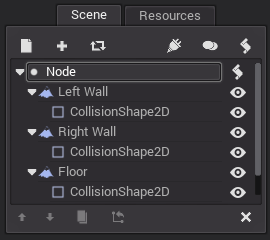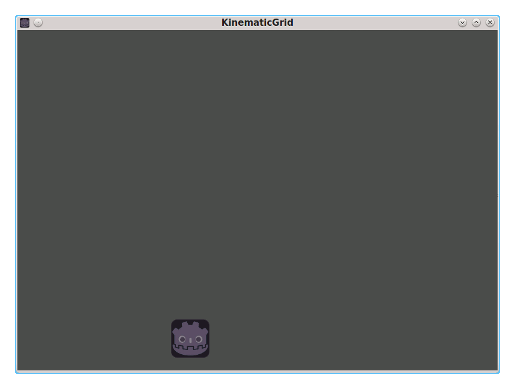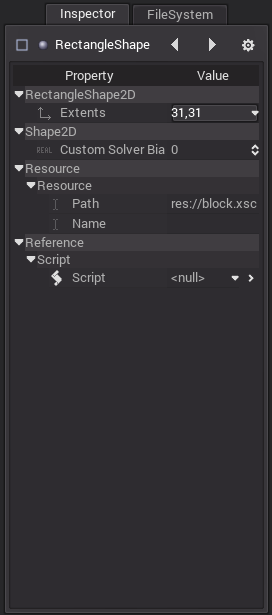ES6 is out, and the world will never be the same. Or something like that. JavaScript won’t be the same, at least once the browsers finish implementing the new standard. Of course, by that time, ES7 will be completed. It’s just like every other standardized language. Almost no compilers fully support C++14, even in 2015, and there will certainly be holes in their coverage two years from now, when C++17 (hopefully) arrives. C# and Java programmers are lucky, since their releases are dictated by the languages’ owners, who don’t have to worry about compatibility. The price of a standard, huh?
Anyway, ES6 does bring a lot to the table. It’s almost a total overhaul of JavaScript, in my opinion, and most of it looks to be for the better. New idioms and patterns will arise over the coming years. Eventually, we may even start talking about “Modern JavaScript” the way we do “Modern C++” or “Modern Perl”, indicating that the “old” way of thinking is antiquated, deprecated. The new JS coder in 2020 might wonder why we ever did half the things we did, the same way kids today wonder how anyone got by with only 4 MB of memory or a 250 MB hard drive (like my first PC).
Babel has an overview of the new features of ES6, so I won’t repeat them here. I will offer my opinions on them, though.
Classes and Object Literals
I already did a post on classes, with a focus on using them in games. But they’re useful everywhere, especially as so many JavaScript programmers come in from languages with a more “traditional” approach to objects. Even for veterans, they come in handy. We no longer have to reinvent the wheel or use an external library for simple inheritance. That’s a good thing.
The enhancements to object literals are nice, too. Mostly, I like the support for prototype objects, methods, and super. Those will give a big boost to the places where we don’t use classes. The shorthand assignments are pure sugar, but that’s really par for the course in ES6: lots of syntactic conveniences to help us do the things we were already doing.
Modules
I will do a post on modules for game development, I promise. For now, I’d like to say that I like the idea of modules, though I’m not totally sold on their implementation and syntax. I get why the standards people did it the way they did, but it feels odd, especially as someone who has been using CommonJS and AMD modules for a couple of years.
No matter what you think of them, modules will be one of the defining points of ES6. Once modules become widespread, Browserify becomes almost obsolete, RequireJS entirely so. The old pattern of adding a property to the global window goes…out the window. (Sorry.) ES6 modules are a little more restrictive than those of Node, but I’d start looking into them as soon as the browsers start supporting them.
Promises
Async programming is the hot thing right now, and promises are ES6’s answer. It’s not full on threading, and it’s distinct from Web Workers, but this could be another area to watch. Having a language-supplied async system will mean that everybody can use it, just like C++11’s threads and futures. Once people can use something, they will use it.
Promises, I think, will definitely come into their own for AJAX-type uses. If JavaScript ever gets truly big for desktop apps, then event-driven programming will become even more necessary, and that’s another place I see promises becoming important. Games will probably make use of them, too, if they don’t cause to much of a hit to speed.
Generators and Iterators
Both of these really help a lot of programming styles. (Comprehensions do, too, but they were pushed back to ES7.) Iterators finally give us an easy way of looping over an array’s values, something I’ve longed for. They also work for custom objects, so we can make our own collections and other nifty things.
You might recognize generators from Python. (That’s where I know them from.) When you use them, it will most likely be for making your own iterable objects. They’ll also be handy for async programming and coroutines, if they’re anything like their Python counterparts.
Syntactic Sugar
A lot of additions to ES6 are purely for aesthetic purposes, so I’ll lump them all together here, in the same order as Babel’s “Learn ES2015” page that I linked above.
-
Arrows: Every JavaScript clone (CoffeeScript, et al.) has a shortcut for function literals, so there’s no reason not to put one in the core language. ES6 uses the “fat” arrow
=>, which stands out. I like that, and I’ll be using it as soon as possible, especially for lambda-like functions. The only gotcha here? Arrow functions don’t get their ownthis, so watch out for that. -
Template Strings: String interpolation using
${}. Took long enough. This will save pinkies everywhere from over-stretching. Anyway, there’s nothing much to complain about here. It’s pretty much the same thing as PHP, and everybody likes that. Oh, wait… -
Destructuring: One of those ideas where you go, “Why didn’t they think of it sooner?”
-
Function Parameters: All these seem to be meant to get rid of any use for
arguments, which is probably a good thing. Default parameters were sorely needed, and “rest” parameters will mean one more way to prevent off-by-one errors. My advice? Start using these ASAP. -
let & const: Everybody complains about JavaScript’s scoping rules.
letis the answer to those complaints. It gives you block-scoped variables, just like you know from C, C++, Java, and C#.varis still there, though, as it should be. For newer JS coders coming from other languages, I’d useleteverywhere to start.constgives you, well, constants. Those are nice, but module exports remove one reason for constants, so I don’t seeconstgetting quite as much use. -
Binary & Octal Literals: Uh, yeah, sure. I honestly don’t know how much use these are in any higher-level language nowadays. But they don’t hurt me just by being there, so I’m not complaining.
Library Additions
This is kind of an “everything else” category. ES6 adds quite a bit to the standard library. Everything that I don’t feel is big enough to warrant its own section goes here, again in the order shown on “Learn ES2015”.
-
Unicode: It’s about time. Not just the Unicode literal strings, but the
StringandRegExpsupport for higher characters. For anyone working with Unicode, ES6 is a godsend. Especially if you’re doing anything with emoji, like, say, making a language that uses them. -
Maps and Sets: If these turn out to be more efficient than plain objects, then they’ll be perfect; otherwise, I don’t think they are terribly important. In fact, they’re not that hard to make yourself, and it’s a good programming exercise.
WeakMapandWeakSetare more specialized; if you need them, then you know you need them, and you probably won’t care about raw performance. -
Proxies: These are going to be bigger on the server side, I think. Testing will get a big boost, too, but I don’t see proxies being a must-have feature in the browser. I’d love to be proven wrong, though.
-
Symbols: Library makers might like symbols. With the exception of the builtins, though, some of us might not even notice they’re there. Still, they could be a performance boost if they’re faster than strings as property keys.
-
Subclassing: Builtin objects like
ArrayandDatecan be subclassed in ES6. I’m not sure how I feel on that. On the plus side, it’s good for consistency and for the times when you really do need a custom array that acts like the real thing. However, I can see this being overused at first. -
New APIs: The new builtin methods are all welcome additions. The
Arraystuff, particularly, is going to be helpful.Math.imul()and friends will speed up low-level tasks, too. And the new methods forString(likestartsWith()) should have already been there years ago. (Of all the ES6 features, these are the most widely implemented, so you might be able to use them now.) -
Reflection: Reflection is always a cool feature, but it almost cries out to be overused and misused. Time will tell.
Conclusions
ES6 has a lot of new, exciting features, but it’ll take a while before we can use them everywhere. Still, I think there’s enough in there to get started learning right now. But there are going to be a lot of projects that will soon become needless. Well, that’s the future for you, and what a bright future it is. One thing’s for sure: JavaScript will never be the same.



